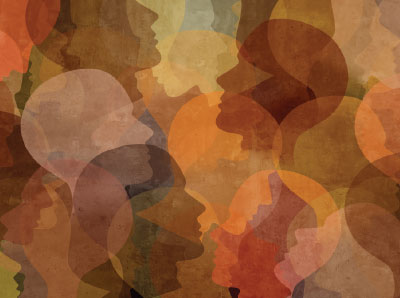Work Group Produces Primer on Structural Racism for Trainees
Abstract
APA/APAF fellows compile a list of resources for medical students and residents to increase their knowledge of the impact of structural racism on patients and clinical practice.

The year 2020 was remarkably challenging as the COVID-19 pandemic shone a glaring and unflattering spotlight on health care disparities faced by minority communities due to the enduring legacy of racism and racial discrimination. Patients belonging to ethnic and racial minorities often face an uphill battle in obtaining the health care they deserve, enduring prejudices that pervade all levels of care and significantly limit access. Ethnoracial biases (implicit and explicit) and discrimination can occur during clinical encounters leading to disparities in diagnoses, medical decision-making, and interactions with patients. These contribute to stress and psychological trauma that increase the risk of psychiatric disorders in members of these vulnerable groups. Despite these facts, however, many medical schools and psychiatry residency programs in the United States do not provide adequate training regarding racially driven health care inequities.
The disproportionate morbidity and mortality of COVID-19 among Blacks, Hispanics, and Native Americans is a direct consequence of long-standing historical injustice due to racism. Psychiatry is not immune from the structural racism that permeates the U.S. health care system as the history of psychiatry is deeply rooted in colonialism and racism. As APA president in 2020-2021, Jeffrey Geller, M.D., M.P.H., focused on confronting these issues. Dr. Geller constituted the Presidential Task Force to Address Structural Racism Throughout Psychiatry, which created courageous initiatives and educational resources on structural racism in psychiatry. A work group of APA/APAF fellows was established, and two of the authors of this article who served on the task force, Drs. Charles Dike and Sanya Virani, guided the fellows in developing projects to address structural racism in psychiatry training. The other authors proposed the creation of an educational resource on structural racism for medical students and trainees in psychiatry.
With the goal of creating a beginner’s guide on the topic, we reviewed various online resources and scientific literature, and senior psychiatrists and APA/APAF fellows across the country provided feedback. The work group subsequently created “A Primer of Online Resources on Structural Racism in Psychiatry for Medical Students & Trainees in Psychiatry.” The primer was created as an easily accessible resource to help trainees understand core concepts and various subtopics of structural racism in psychiatry. The primer consists of a wide range of literature on structural racism, including studies, reviews, and meta-analyses.
The core of the primer addresses topics related to the impact of structural racism on mental health. Examples of social determinants of mental health related to race include racial disparities in immigration policies, child welfare, criminal justice, access to mental health and substance use treatment, food insecurity, racial segregation of neighborhoods, and impact on physical health. The primer also provides resources for trainees to develop skills for addressing racism in clinical settings and other resources for in-depth learning on structural racism in psychiatry. ■
The primer is posted here.



